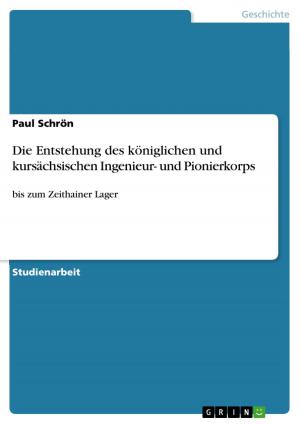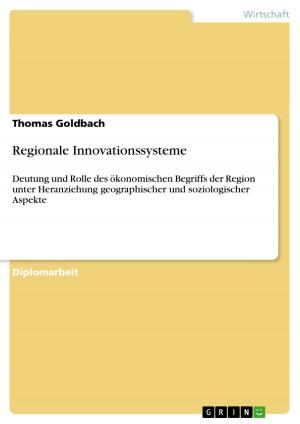Age Diversity - a management approach against the background of demographic changes
Business & Finance, Human Resources & Personnel Management| Author: | Lucienne Reinhold | ISBN: | 9783640848126 |
| Publisher: | GRIN Verlag | Publication: | February 27, 2011 |
| Imprint: | GRIN Verlag | Language: | English |
| Author: | Lucienne Reinhold |
| ISBN: | 9783640848126 |
| Publisher: | GRIN Verlag |
| Publication: | February 27, 2011 |
| Imprint: | GRIN Verlag |
| Language: | English |
Bachelor Thesis from the year 2011 in the subject Business economics - Personnel and Organisation, grade: 1,3, University of Applied Sciences Essen, language: English, abstract: The topic of age and employment is increasingly becoming relevant due to discussions regarding the future of the working society in Germany as well as against the background of demographic changes. These emerging demographic trends, characterized by a declining birth rate, a greater share of older people and an increasing life expectancy, lead to a future lack of younger employees, growing age diversity within the company as well as to older customers and employees. In order to maintain and improve their position in an increasingly competitive market, companies will need to bring in strategies and competencies that allow them to equally develop, remain and use the potentials of all age groups in the company. Up to now, companies have not sufficiently recognized and used the economic potential that in particular their older employees can contribute to the working processes. On the contrary, the up to now existing legal simplification of early retirement together with false prejudices about the achievement potential connected with age discrimination have led to the dismissal of especially older employees in cases of necessary restructuring measures connected with staff reduction. The fact that the older employees' potentials in combination with the potentials of the younger employees in the sense of a positive age diversity can generate competitive advantages, is however not yet sufficiently recognized. In this context, an age diversity approach will be developed that demonstrates the interrelations in all its facets. Age diversity is thereby focusing on the integration of the various age groups in the company as well as on the appreciation of the skills and abilities of the young and old employees. A main goal is the effective conflation of the potentials of all generations. In order to achieve this, it is necessary to develop respective measures of personnel management and to use them in various fields of action. Which measures are included and which competitive advantages can be achieved out of them, will be explained in the following based on a comprehensive approach towards age diversity in Germany while considering certain requirements and framework conditions.
Bachelor Thesis from the year 2011 in the subject Business economics - Personnel and Organisation, grade: 1,3, University of Applied Sciences Essen, language: English, abstract: The topic of age and employment is increasingly becoming relevant due to discussions regarding the future of the working society in Germany as well as against the background of demographic changes. These emerging demographic trends, characterized by a declining birth rate, a greater share of older people and an increasing life expectancy, lead to a future lack of younger employees, growing age diversity within the company as well as to older customers and employees. In order to maintain and improve their position in an increasingly competitive market, companies will need to bring in strategies and competencies that allow them to equally develop, remain and use the potentials of all age groups in the company. Up to now, companies have not sufficiently recognized and used the economic potential that in particular their older employees can contribute to the working processes. On the contrary, the up to now existing legal simplification of early retirement together with false prejudices about the achievement potential connected with age discrimination have led to the dismissal of especially older employees in cases of necessary restructuring measures connected with staff reduction. The fact that the older employees' potentials in combination with the potentials of the younger employees in the sense of a positive age diversity can generate competitive advantages, is however not yet sufficiently recognized. In this context, an age diversity approach will be developed that demonstrates the interrelations in all its facets. Age diversity is thereby focusing on the integration of the various age groups in the company as well as on the appreciation of the skills and abilities of the young and old employees. A main goal is the effective conflation of the potentials of all generations. In order to achieve this, it is necessary to develop respective measures of personnel management and to use them in various fields of action. Which measures are included and which competitive advantages can be achieved out of them, will be explained in the following based on a comprehensive approach towards age diversity in Germany while considering certain requirements and framework conditions.















